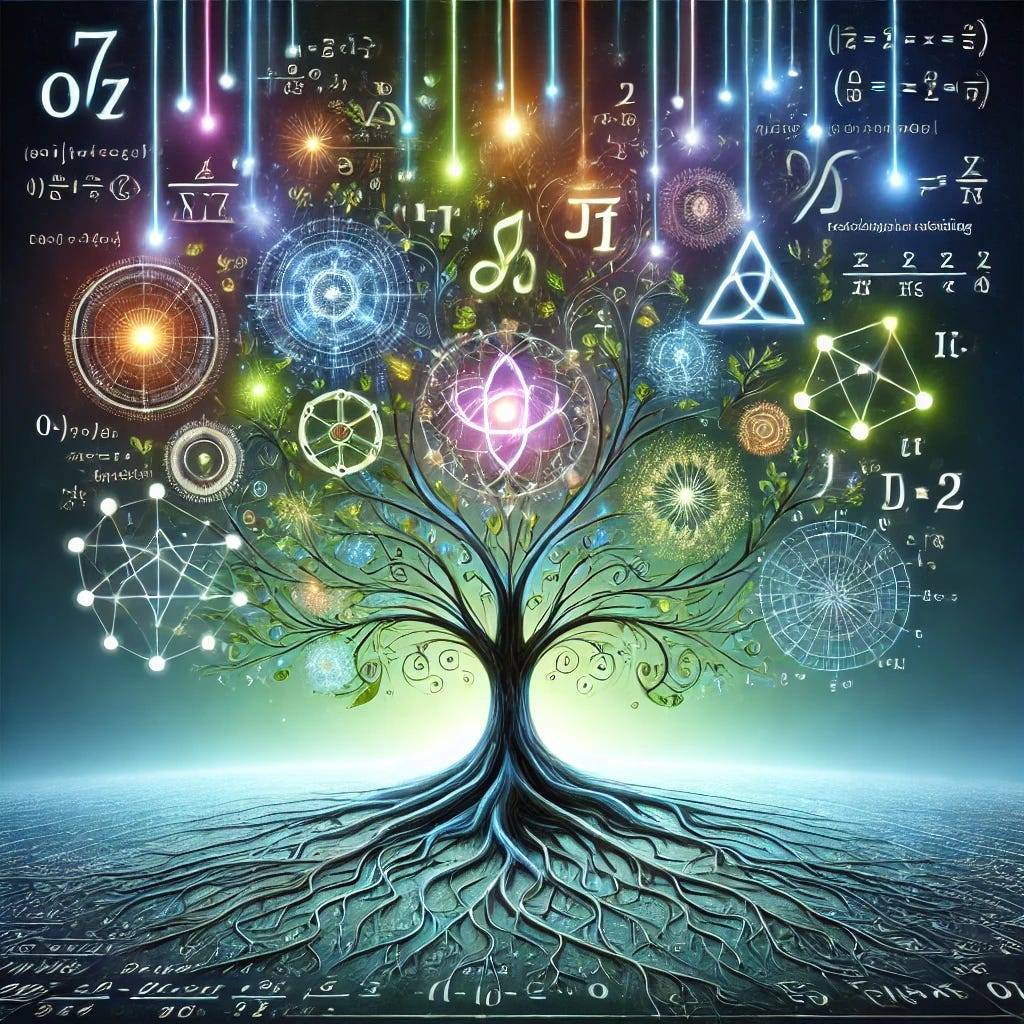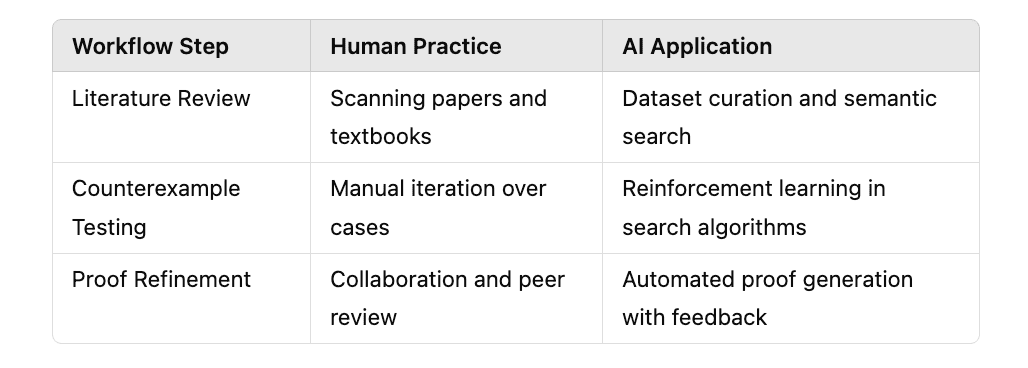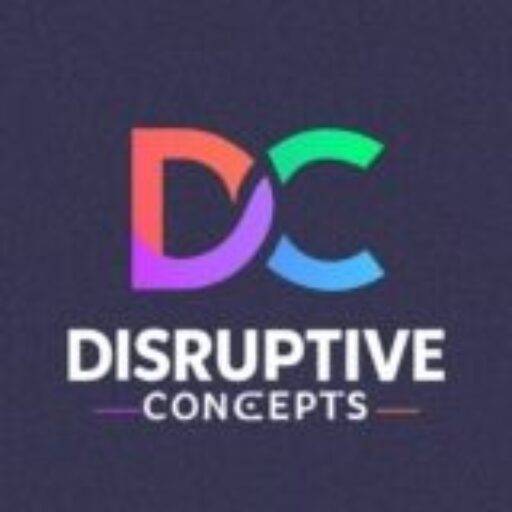
Mathematics is entering a transformative era, driven not by chalk and blackboards but by the relentless pace of artificial intelligence (AI). As mathematical problems grow in complexity, AI systems like large language models (LLMs) are evolving into indispensable tools, or “mathematical copilots,” capable of augmenting human discovery. However, this shift raises an intriguing question: how can machines not only solve equations but also think like mathematicians? At the heart of this revolution lies a paradigm shift — from results-based datasets to systems that capture the nuanced workflows of proof discovery. A new article explores the intersection of AI, mathematics, and motivated proofs, unveiling how we are redefining the boundaries of mathematical thought.
Reimagining Mathematical Workflows
One of the most significant challenges in mathematical AI is the representation of workflows. While traditional datasets focus on theorem statements and their proofs, they often neglect the intermediate steps that mathematicians use to navigate complex problems. Imagine constructing a building where the blueprints show only the finished structure, omitting the scaffolding, tools, and processes that made it possible.
Mathematical workflows include steps like surveying literature, formulating intermediate conjectures, and testing counterexamples. These processes are vital for fostering intuition and creativity. For instance, researchers propose mapping these workflows into Markov Decision Processes (MDPs) to emulate the decision-making process in proof discovery. By training reinforcement learning agents on these datasets, AI can begin to understand not just what a proof is but how it is built. Such advancements could lead to copilots that mimic human reasoning, guiding mathematicians toward novel discoveries rather than merely verifying known results.
Below is a table illustrating key elements of mathematical workflows and their AI integration:

Motivated Proofs: Teaching Machines to Explain
A proof’s utility extends beyond its correctness; its elegance and explanatory depth inspire mathematical understanding. This principle forms the basis of “motivated proofs,” a concept introduced by George Pólya in 1949. Unlike unmotivated proofs, which merely verify correctness, motivated proofs detail the reasoning that leads to each step.
Consider Cantor’s theorem, which states that there is no surjection from a set to its power set . An unmotivated proof might simply construct a counterexample and verify its properties. In contrast, a motivated proof systematically explores subsets of , narrowing possibilities through logical deduction and revealing the thought process behind the result.
For AI, generating motivated proofs is a significant leap. It requires understanding the “why” behind mathematical decisions, not just the “what.” Researchers advocate using datasets enriched with motivated proofs to train models capable of explaining their reasoning. Preliminary investigations reveal that while current LLMs can mimic these proofs, their understanding remains superficial. Future benchmarks must evaluate AI’s ability to generate and recognize motivated proofs, pushing the boundaries of machine reasoning.
Challenges in Dataset Design
Despite the promise of mathematical copilots, their development is hindered by gaps in existing datasets. Traditional datasets focus on end results, neglecting the intermediate steps and workflows that define mathematical practice. This oversimplification limits AI’s ability to engage with mathematics as a dynamic, exploratory process.
A key recommendation is the creation of “mathematical datasheets,” inspired by ethical AI frameworks. These datasheets would document dataset scope, difficulty levels, and the presence of motivated proofs, ensuring transparency and usability. For instance, datasets could include detailed annotations of workflows, such as the sequence of conjectures and counterexamples leading to a theorem. By capturing these nuances, AI systems could learn to assist in all facets of mathematical research, from problem formulation to proof refinement.
Moreover, the field faces the challenge of privacy in data collection. While conferences and seminars offer rich sources of mathematical discourse, recording these interactions requires ethical considerations. Researchers propose privacy-preserving methods, such as anonymized transcription, to build datasets that reflect the real-world practices of mathematicians.
How Machines Learn to Think
Modern AI systems use reinforcement learning to emulate human decision-making. By training on workflows mapped as MDPs, they can learn to explore proofs creatively, mimicking the thought processes of mathematicians.
The Role of Elegance in Proofs
Motivated proofs prioritize explanation over efficiency. This human-centric approach ensures that AI-generated proofs are not just correct but also comprehensible, paving the way for better collaboration between humans and machines.
The Need for Comprehensive Datasets
AI’s mathematical capabilities are only as good as the data it learns from. Future datasets must include not just problems and solutions but also the workflows, conjectures, and counterexamples that define mathematical reasoning.
Ethics in Data Collection
Recording mathematical discussions at conferences could revolutionize dataset quality, but it requires ethical frameworks to protect participants’ privacy.
The Educational Potential of AI Copilots
AI copilots can transform education by guiding students through the reasoning behind proofs, fostering a deeper understanding of mathematical concepts.
Towards Thought Partnership: A New Horizon for AI in Mathematics
As we stand on the brink of a new mathematical era, the promise of AI copilots is both inspiring and humbling. These systems are more than tools; they are thought partners, capable of transforming how we approach discovery. By capturing the workflows and motivations that drive mathematical reasoning, AI can bridge the gap between computation and creativity.
The road ahead is not without challenges. Building datasets that reflect the richness of mathematical practice, ensuring ethical data collection, and developing benchmarks for motivated proofs require collective effort. Yet the rewards are immense: a future where humans and machines collaborate to unravel the mysteries of mathematics, one motivated proof at a time.
About Disruptive Concepts
Welcome to @Disruptive Concepts — your crystal ball into the future of technology. 🚀 Subscribe for new insight videos every Saturday!
See us on https://twitter.com/DisruptConcept
Read us on https://medium.com/@disruptiveconcepts
Enjoy us at https://disruptive-concepts.com
Whitepapers for you at: https://disruptiveconcepts.gumroad.com/l/emjml







